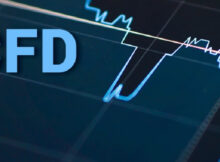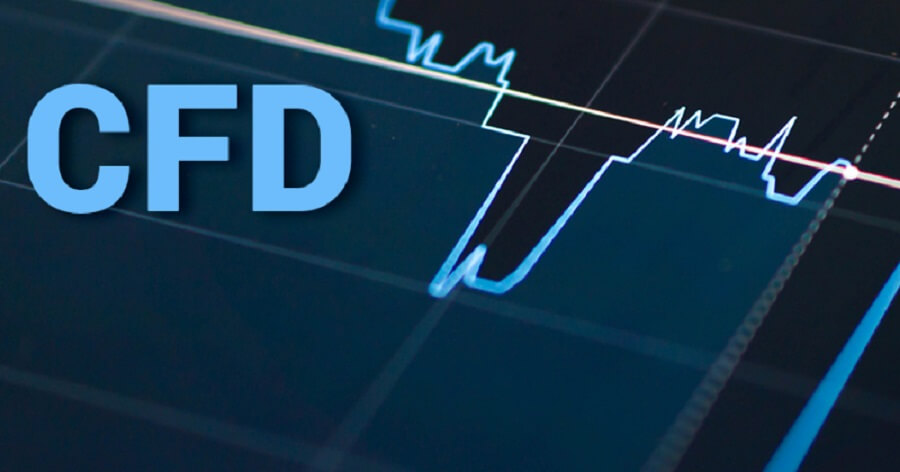Many of us are familiar with stock trading and have no qualms navigating the stock market. With the rapidly growing popularity of different ways of trading, you may be tempted to expand your skill set. If you are looking for new ways to invest without deviating too far from the stock market, you may want to trade equity derivatives.
In this article, we will examine what equity derivatives are, 3 ways to trade equity derivatives, and the benefits and risks of trading the instrument.
What are Equity Derivatives?
Derivatives are a type of financial agreement that offers investors the option to speculate on the price movements of underlying securities. Investors do not have to own the security and can potentially make profits based on price fluctuations in the market. The agreement comes in the form of a legal contract investors purchase.
3 Ways to Trade Equity Derivatives
There are plenty of ways to trade equities with derivatives. Three of the most popular are CFDs, options, and single stock futures. We will explore them below.
-
Contracts for Differences (CFDs)
Contracts for Differences, abbreviated to CFDs, are legal agreements between the buyer and seller. They require sellers to pay the buyer the difference between the current stock price and the price at the time of the contract.
US traders are not allowed to purchase CFDs, but Australian traders certainly can. Traders can use a margin to trade CFDs, which is a small amount of money that the investor puts down at the outset to open the full position.
-
Options
Options are contracts that allow investors to speculate or hedge an existing position with limited risk. Traders buy calls or put options depending on how they think the market will go. For example, if they think the market is bullish, they will purchase a call option. Conversely, if they think the market is bearish, they will buy a put option.
The good thing about options is that they offer a level of flexibility that is suitable for many traders. They give options holders the right, but not the obligation, to exercise the call or put option. This means if the trader finds that the stock market is not going the way they predicted, they can do nothing and let the options contract expire.
Traders pay premiums to purchase options contracts. How much a contract premium costs depends on the position size a trader wants to open, the volatility of the market, and the intrinsic value of the underlying security.
-
Single Stock Futures (SSFs)
Single Stock Futures, abbreviated to SSFs, are contracts that stipulate deliveries of 100 shares of a specified stock on a predetermined expiration date. Sellers price SSF contracts based on that of the underlying security, the carrying cost of interest, and the amount of dividends paid out over the period of the contract.
Traders also put down a margin to trade SSF, and they can trade with leverage to maximize their full position size. This way, they can make the most out of their initial deposit and their investments in general. Traders trading SSFs also do not need to adhere to day trading restrictions set by the SEC.
Why Trade Equity Derivatives?
There are several benefits to trading equity derivatives compared to traditional stock trading.
Opportunity to go Long or Short
Traders who trade with equity derivatives can find opportunities in both bullish and bearish markets. This is because they are simply speculating on the price of an underlying security and do not need to own the security itself. They are free to predict whether prices will go up or down, and they can put money down and profit from either speculation as long as they are correct.
This gives traders much more flexibility in trading. They can find opportunities as they arise in all market conditions and potentially profit from price changes in either direction.
Use of Leverage
Both CFDs and SSFs permit leveraged trading. This separates them from traditional stock trading. Traders can potentially profit in a substantial way if their speculations are correct because their position sizes are magnified.
The availability of leverage also means traders can place larger trades with just a small deposit at the outset. This makes equity derivatives a relatively inexpensive way for traders to speculate on stock price movements.
Ability to Track a Basket of Stocks
CFD and option traders can also track a bundle of stocks in the same sector, or stocks that share the same characteristics. They do this through tracking ETFs and indices, providing traders increased exposure to specific sectors and a more diversified portfolio.
Risks of Trading with Equity Derivatives
Nevertheless, there are risks that come with trading equity derivatives. Some are general, including market risk. Others are more specific, such as leverage risk and counterparty risk.
-
Market Risk
Market risk applies to essentially all investments. It is the risk of the market performing not as a trader expects. Traders take their positions and speculate on stock price movements through a combination of technical and fundamental analysis.
-
Leverage Risk
Leverage can produce substantial earnings if a trader’s speculations of price movements are correct. However, they can also produce substantial losses if a trader makes a wrong prediction. Losses can exceed the size of the initial investment and go well beyond it, making leverage a dangerous tool. This is a risk that derivative traders must take if they want to trade with leverage.
-
Counterparty Risk
Counterparty risk is the risk that contract buyers, sellers, and dealers all face. It is when one of the parties involved in the trade defaults on the contract. Equities that trade on exchanges face a much lower risk as exchanges are well-regulated. However, counterparty risk is much larger when traders trade equity derivatives over the counter (OTC). The latter manner of trading is less well-regulated and counterparty risk is high.
Risk Management Techniques
Traders cannot prevent risks from happening, but they can take steps to reduce the impact of these risks. One way they can do this is through performing a thorough investment analysis before purchasing an equity derivative. They should calculate the risk/reward ratio and keep a close eye on the news and monitor market movements.
Additionally, traders should exercise the use of leverage with caution. This means never investing more money than one can afford to lose – and knowing when to use less leverage when needed.
Summary
The stock market is an exciting place and there are lots of opportunities to invest in equities, including using derivatives. The three main ways of investing with equity derivatives are through CFDs, options, and SSFs. Each has its own pros and cons, and you should consider which method best suits your trading style, preferences, and risk appetite before deciding.
All traders should do well to remember that all forms of trading come with risks; equity derivatives are no different. Therefore, you should always endeavor to have a risk management plan and utilize it. You should also speculate the markets sensibly and never trade more than you can afford to lose.





Recent Comments